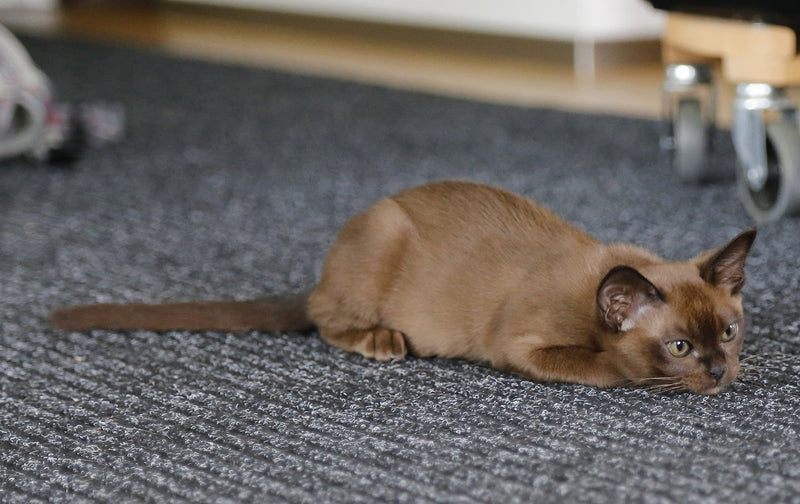
In a testament to its appearance, the Burmese cat is sometimes described as a "brick wrapped in silk". The Burmese love to observe their hoomans and are utterly devoted to window-supervising the street. The breed originally originated in Thailand, but it was developed in the United States and Britain.
Please do not confuse the Birman cat with the Birman cat, a completely different cat breed of a similar name.
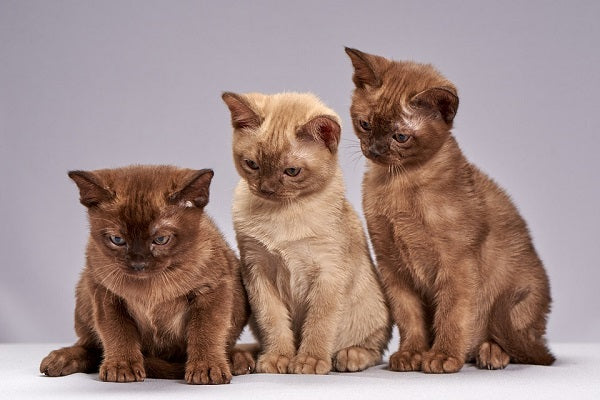
Main features of Burmese Cats
The modern Burmese breed was developed in the United States and Britain under distinct breed standards. Such an unusual breeding program resulted in the development of a number of different features among the two groups, but most cat registries still do not formally recognize them as distinct breeds.
The British Burmese (or "traditional" or European Burmese) has a long, slender body, long legs, and oval paws. The head is wedge-shaped with a long muzzle and almond-shaped eyes. The tail is usually medium long.
The American Burmese (or "contemporary" Burmese) has a significantly stockier body and its legs are proportionate to the body. The head is much broader, muzzle shorter and flattened and the eyes are round. The ears are wider at the base in comparison to the British variant. The paw shape and tail length are similar in both groups.
Both British and American Burmese cats are small to medium in size, commonly weighing from 4 to 6 kg. They are always very muscular and strong, thus often feeling heavier when held than they actually are. This is where they got their nickname of a "brick wrapped in silk".
The coat is always short, silky and glossy. Originally, all Burmese cats were rich dark brown (sable in USA, brown in UK and Australia and seal in New Zealand), but today a wide range of colors is allowed.
The standard sable color is a result of the so-called Burmese gene (cb) which causes a reduction of the pigment production. It renders the usual expression of the color creating a faded color-point effect (i.e. it converts black coloration into brown). The color should always be solid though, only slightly and faintly shading to lighter underparts. Their eyes are green and gold and any spotting on the coat is not allowed.
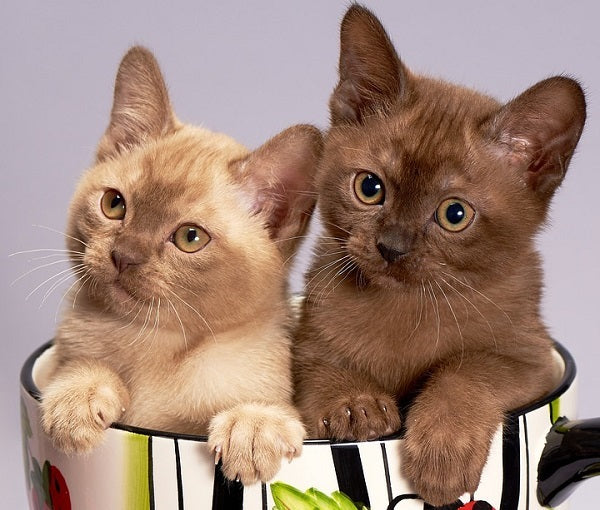
Origins
The Burmese cat was originally created from crossbreeding between the dark brown cat named Wong Mau and the sealpoint Siamese named Tai Mau. Wong Mau was imported from Burma to San Francisco by Dr. Joseph Cheesman Thomson in 1930. Many fanciers admired Wong Mau for her dark coat and close resemblance of the Siamese, which led Dr. Thomson to suspect that she was a cross between a Siamese and an unknown dark cat.
In efforts to confirm her actual breed, Dr. Thomson decided to breed her with the Siamese, Tai Mau. Some of Wong Mau's kittens appeared as Burmese/Siamese hybrids, while others looked just like pure Siamese. He then bred Wong Mau to the dark kittens and produced the first Burmese kittens who later became the foundation of the new breed.
The breed was granted by Cat Fanciers' Association (CFA) in 1936 but was suspended a decade later due to extensive outcrossing with Siamese caused by increased popularity. American breeders continued to refine the unique Burmese standard, and CFA finally lifted the suspension in 1954. At the same time, British breeders attempted to breed Burmese cats through a distinct breeding program composed of a variety of cats, including some imported from America.
In 1952, the British Burmese was finally recognized by the UK's Governing Council of the Cat Fancy (GCCF). GCCF banned crossing with the American Burmese in efforts to preserve the "traditional" line. To this day, the American and British version of the breed are kept genetically strictly distinct.
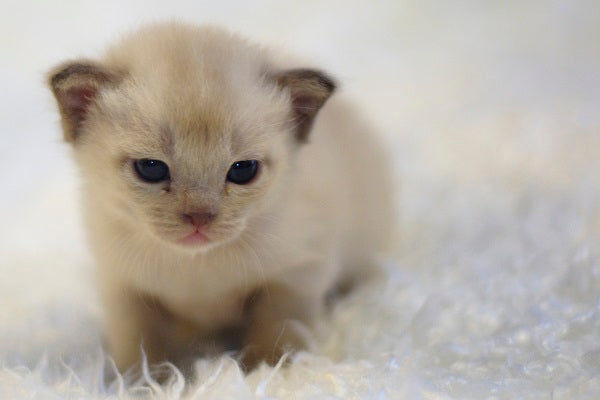
Personality of Burmese Cats
The Burmese make excellent family pets due to their loving, affectionate and playful nature. They are considered attention seekers and tend to cling to their fur-parents every chance they get. Because of their clingy personalities and puppy-like behavior, Burmese are often considered to be the dogs of the cat world.
These people-oriented cats often maintain their energetic and playful kitten-like personality in older years too. Like their Siamese ancestors, Burmese are very vocal, affectional and sweet. They are not independent and don't like being left alone for long periods of time. They get along very well with kids and other pets, including dogs.
Burmese Cat Health Information
Some published studies have recognized the Burmese cats, among several other breeds, to be at a higher risk from diabetes (Cooper RL et al, 1997-2007 & Ohlund M et al, 2015). Diabetes mellitus (DM) is a metabolic disorder in which blood sugar levels remain high for long periods of time. This occurs when there isn’t enough insulin being produced in the body or the body isn’t responding to it.
Hypokalaemia, a recessive genetic disease characterized by low serum potassium levels, has also been identified and associated with the Burmese cats. Other than this, Burmese breed is considered to be a fairly healthy and strong breed with an average lifespan of 10 to 17 years.
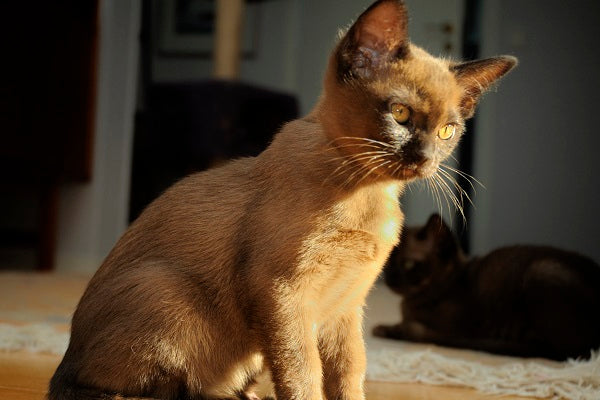
Did you know?
1. The name of the Burmese breed in Thai means "beautiful, fortunate and of splendid appearance". We believe that these sleek, good-looking cats are well worth the title.
2. Burmese love to investigate. To call a Burmese curious would be a daring understatement. This is the cat that will keep an eye on absolutely everyone and everything around them. With a Burmese, you will have the most committed overseer and participant in pretty much anything you do.
3. They make for the bestest of friends. They are said to resemble a lot of the puppy-like features, and their friendliness is definitely one of them. They love their hoomans, other cats and dogs and they will be happiest when you are home. They are known to even comfort their hoomans when they're sick or sad.
4. They are not well-suited for outdoors. This curious cat is too trusting and will easily get in trouble. Their survival skills are not among the best in the cat world either. This is why it is generally not recommended to let them freely roam outdoors.
5. Together with Siamese, they were the founders of the Tonkinese cats. Tonkinese cats were created in Canada by a crossbreeding program between the Siamese and Burmese, with the aim of creating the purrfect combination of the best features of the two breeds. The Tonkinese was officially recognized as a breed in 2001.
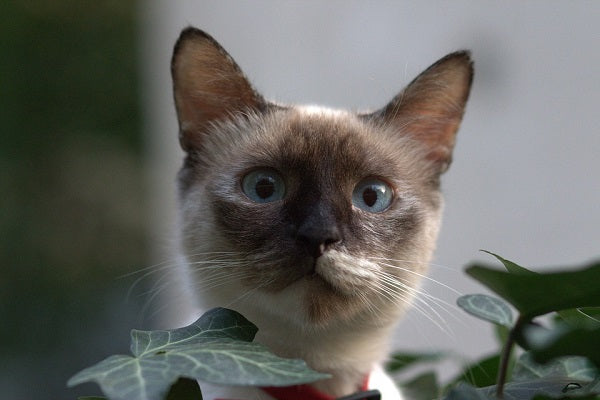
The Burmese cat is a curious cat with an intriguing background and wholesome personality. While widely admired for their gorgeous looks, these cats also make for the most purrfect and loyal cat friends you have only dreamed of. Do you have a Burmese or related cat? Share your story with us!
Discover more mystical stories of cat breeds here. Have we not introduced a breed of your interest? Let us know via Social Media and we let us fix that.
Citations:
1. Cooper RL, Drobatz KJ, Lennon EM, et al. Retrospective evaluation of risk factors and outcome predictors in cats with diabetic ketoacidosis (1997-2007): 93 cases. J Vet Emerg Crit Care (San Antonio). 2015;25(2):263-272.
2. Öhlund M, Fall T, Ström Holst B, Hansson-Hamlin H, Bonnett B, Egenvall A. Incidence of diabetes mellitus in insured Swedish cats in relation to age, breed and sex. J Vet Intern Med. 2015;29(5): 1342-1347.
